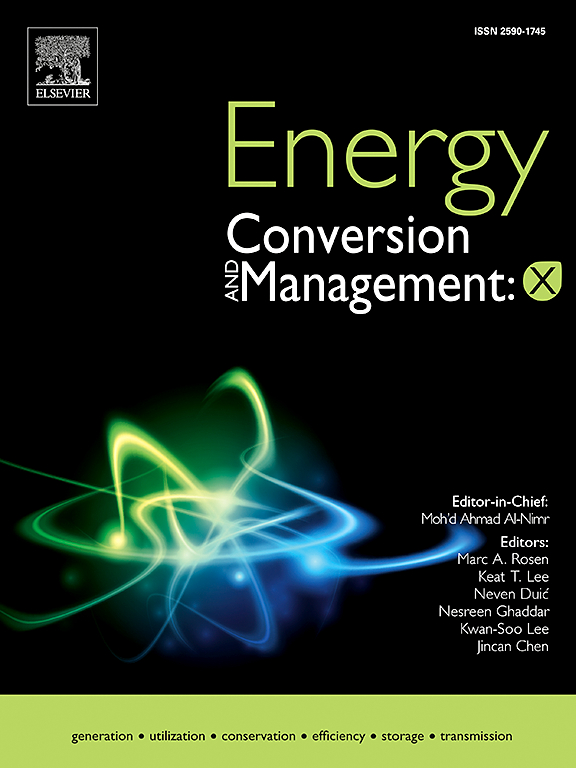Flow-driven directional freeze-casting of graphene aerogels on tubular components for enhanced thermal energy management
IF 9.9
1区 工程技术
Q1 ENERGY & FUELS
引用次数: 0
Abstract
In the rapidly advancing field of energy storage technologies, achieving efficiency and sustainability has become paramount, with adsorption playing a crucial role. This adsorption process benefits significantly from aerogel-based structures due to their inherent porosity and customizable architectures, which facilitate exceptional heat- and mass-transfer capabilities. However, despite extensive research on optimizing aerogel microstructures for enhanced adsorption, integrating these materials into practical energy storage systems remains challenging. To overcome this, we present a flow-driven directional freeze-casting technique that integrates aerogels with radially oriented pore networks onto tubular components, forming well-aligned, fin-like structures. This innovative method increases the practical applicability of aerogels in real-world energy storage systems. By adjusting process conditions, we achieve a further improved alignment similar to longitudinal finned structures, significantly enhancing mass transfer. This improved alignment results in ∼ 35 % reductions in both adsorption and desorption times compared to the lowest alignment sample. Based on the measured adsorption characteristics, the performance estimation for thermal energy storage systems integrating the tailored aerogel structure showed a 61 % increase in power density compared to the highest recently reported value for sorption-based thermal battery. When applied to adsorption heat pump systems, the estimated specific cooling power improved by 68–98 % compared to other reported adsorbent composites. These results highlight the potential of our novel aerogel integration technique to enhance thermal management solutions and significantly advance adsorption-based energy systems.

求助全文
约1分钟内获得全文
求助全文
来源期刊

Energy Conversion and Management
工程技术-力学
CiteScore
19.00
自引率
11.50%
发文量
1304
审稿时长
17 days
期刊介绍:
The journal Energy Conversion and Management provides a forum for publishing original contributions and comprehensive technical review articles of interdisciplinary and original research on all important energy topics.
The topics considered include energy generation, utilization, conversion, storage, transmission, conservation, management and sustainability. These topics typically involve various types of energy such as mechanical, thermal, nuclear, chemical, electromagnetic, magnetic and electric. These energy types cover all known energy resources, including renewable resources (e.g., solar, bio, hydro, wind, geothermal and ocean energy), fossil fuels and nuclear resources.
 求助内容:
求助内容: 应助结果提醒方式:
应助结果提醒方式:


